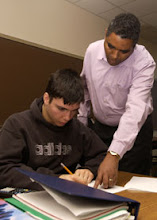A couple of weeks ago, one of our regular readers sent us an email that would have blown out the limits of any known comment box. It ran about three pages and raised eight or ten excellent comment-questions about the current economic scene – enough fodder for a whole series of blogs – and when I asked permission to use them that way, he was kind enough to agree. The entries ranged from suggestions as to the foundations of recovery, to musings on the nature of modern political reality. So here goes.
Our correspondent’s first suggested foundation for economic growth calls for the expansion of foreign markets for US goods and services, what trade economists refer to as export-led growth. Simply, the idea is that US output and employment must increase when foreigners start buying more of our stuff.
To expand markets, it seems that American firms need to close our trade deficit, selling more both here and abroad. But wait a minute. All that says is that American firms need to sell more stuff, which is exactly the problem we’re trying to address. So let’s back up. The trade deficit isn’t the cause of the problem for US firms – it’s the effect of deficient demand for US goods in foreign markets. We need to focus on foreign market demand.
The good news for this strategy is that approximately 6.6 billion people don’t live here – all of them potential importers of our exports, if only they wanted and could afford the things we have to sell. And, based on recent data (Economic Report of the President, 2011), we already export more than $1 trillion worth of such stuff in a typical year. Trouble is, there’s a lot more stuff that we prefer to buy from overseas, about 1.8 times as much, as of 2007, which suggests that, on balance, their goods are more attractive to us than ours are to them. But our trading partners aren’t monolithic: maybe we can learn something by looking at bilateral trade flows.
The question then becomes, “With whom we are running trade deficits?” Broadly speaking, the answer is, “Everybody.” (Except Brazil and Singapore.) Surely some of the imbalance is attributable to trade barriers of one kind and another and certainly a big chunk is the consequence of the over-valued yuan, but even if we could perfectly balance our trade with China, we would still have been about $550 billion short of current accounts parity in the last year before the recession. Which is not to say that increasing exports by $250 billion would be useless: holding everything else constant, it would lop about one percentage point off our unemployment rate.
So, maybe if we look at what it is that we export, we can get a handle on which American goods are relatively attractive. If we have enough unused capacity, opening new markets to a potentially attractive export would make a lot of sense. Examining the 2007 data by broad categories of imports / exports, however, we find that
· We exported about as much food and as much non-automotive capital as we imported.
· We imported about twice as much in the way of industrial supplies and material as we exported ($320+ billion deficit).
· We ran a $120+ billion deficit in automobiles and engines.
· We ran a $320+ billion deficit in other consumer goods.
· We ran a $120+ billion deficit in petroleum products.
Put another way, we could double our automotive exports without coming close to closing the balance of payments gap. Goodness knows, we have the plant capacity to expand auto production dramatically and cut manufacturing unemployment in the process, but the real question (emblematic of the problem underlying the strategy of export-led growth) is, “We Americans may love them, but who else wants to buy a Chrysler ‘imported from Detroit’?”
Dr. Lewis C. Sage (AB Kenyon, PhD U. Maryland) likes intersections. Since 1991, he has taught Law and Economics, Mathematical Economics, and the Economics of Healthcare. A former Fulbright Fellow (Bulgaria 1995-6), he teaches an interdisciplinary Honors seminar, Enduring Questions, and is studying strategy in the NFL draft with faculty and students in Sport Management and Psychology. E-mail: lsage@bw.edu



No comments:
Post a Comment